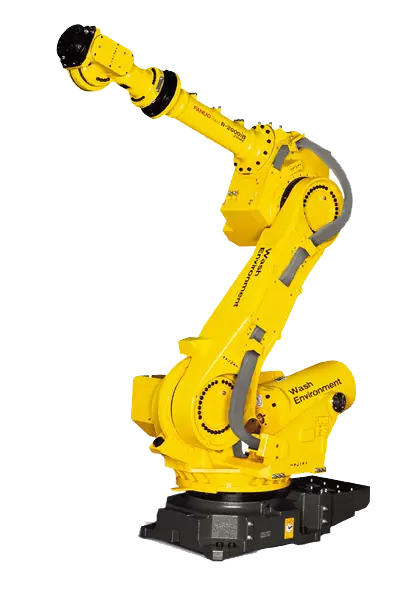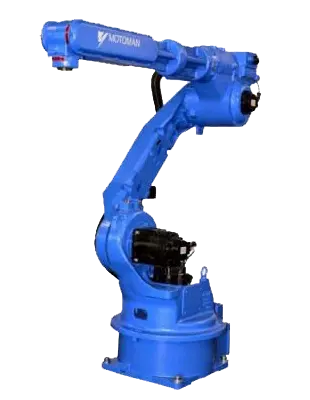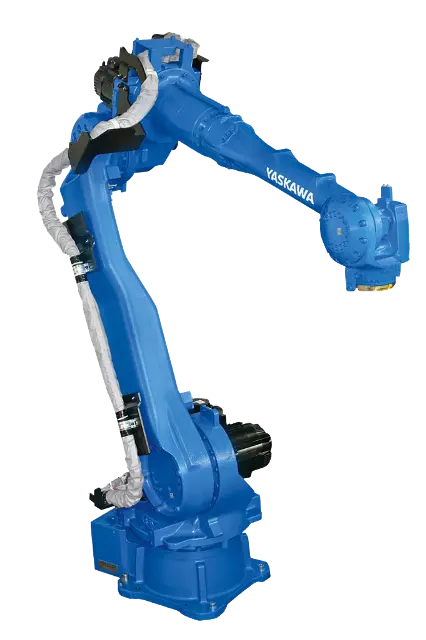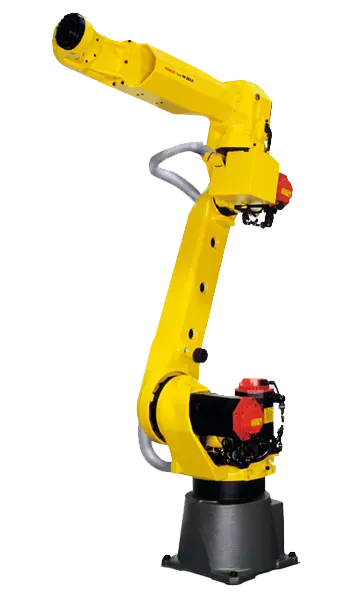Robot PLC - Robots Done Right
PLC stands for programmable logic controller and is used for industrial automation, particularly with industrial robots. A PLC features a digital computer that controls the execution of industrial robots and their peripheral equipment. PLCs may be stand alone or built into the robot controller of articulated robots. The FANUC Arcmate 120ic is an example of a robot that can be controlled by a PLC
PLCs are not new to industrial robot automation. The first PLCs were implemented in the 1960s as a means to prevent high power usage while managing manufacturing processes. While the first PLCs were large and bulky, todays are modernized, sophisticated machines that are capable of operating in the extreme conditions of industrial manufacturing.
Connected input devices and sensors send information to the PLC, the PLC will process the information, and then activate the necessary response from its programmed parameters. PLCs can oversee robot productivity, robot malfunctioning, the automatic initiation and ending of processes, and other aspects of the robotic system’s operation. The components of a PLC include a CPU, memory system, O/P (output) section, I/O (input) section, power supply, and a programming device.
As mentioned above, PLCs can either be stand-alone devices or built into robot controllers, which is becoming more common with robots today. Determining if a controller-based robot PLC or a separate PLC is needed will depend upon the complexity of your operation. Controller based PLCs can typically handle one to two six axis robots or a simple workcell setup. Smaller manufacturers are usually the ones that can benefit the most from a controller-based PLC with significant cost savings. For example, a automated material handling application featuring one or two FANUC M16ib can be controlled through a single interface and will most likely not require a dedicated PLC device. The FANUC R-30ia teach pendant can be used for programming functions. While its controller would be able to implement starting and stopping functions, diagnostics, conveyor controls, and part selections. Multiuse workcells featuring an FANUC LR Mate 200ic can all be controlled by a PLC. automated arc welding, robotic assembly and robotic pick and place are all applications that can benefit from using a PLC.
More complex robotic systems or ones with a higher number of I/O devices will need an external PLC. Workcells with multiple robots or robotic systems with several peripheral machines would fall under this category. Medium to large manufacturers often utilize a dedicated PLC. Complex manufacturing processes such as those in the automotive industry benefit from PLCs. They excel at multi-process and complicated applications. They are able to coordinate the operation of several robots to function in sync with one another. For instance, a PLC can manage multiple FANUC R2000ib robots while they work to weld together a car frame, managing part transfers, part positioning, and welding automaton, while also ensuring the robots do not interfere with one another for a well-coordinated operation. PLCs can also detect errors or inefficiencies and report on those, allowing the operator to reprogram to correct such issues. Other scenarios that may call for an external PLC include a large amount of data processing, the ability to control processes even when the robot is powered down, or for high mathematic functions. A robotic welding cell featuring multiple Motoman MA1400 robots can all be controlled from a PLC.
PLCs are an important component of robotic automation as they direct and monitor the operation of robots and peripheral equipment for the successful execution of manufacturing applications.




